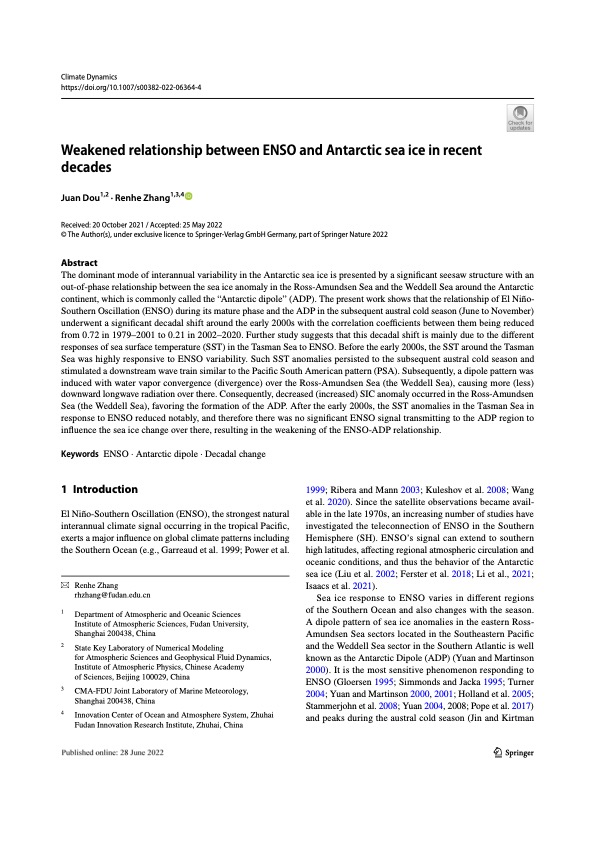Weakened relationship between ENSO and Antarctic sea ice in recent decades
编号:344
访问权限:仅限参会人
更新:2022-07-08 16:17:48
浏览:892次
口头报告
摘要
The dominant mode of interannual variability in the Antarctic sea ice is presented by a signifcant seesaw structure with an out-of-phase relationship between the sea ice anomaly in the Ross-Amundsen Sea and the Weddell Sea around the Antarctic continent, which is commonly called the “Antarctic dipole” (ADP). The present work shows that the relationship of El NiñoSouthern Oscillation (ENSO) during its mature phase and the ADP in the subsequent austral cold season (June to November) underwent a signifcant decadal shift around the early 2000s with the correlation coefcients between them being reduced from 0.72 in 1979–2001 to 0.21 in 2002–2020. Further study suggests that this decadal shift is mainly due to the diferent responses of sea surface temperature (SST) in the Tasman Sea to ENSO. Before the early 2000s, the SST around the Tasman Sea was highly responsive to ENSO variability. Such SST anomalies persisted to the subsequent austral cold season and stimulated a downstream wave train similar to the Pacifc South American pattern (PSA). Subsequently, a dipole pattern was induced with water vapor convergence (divergence) over the Ross-Amundsen Sea (the Weddell Sea), causing more (less) downward longwave radiation over there. Consequently, decreased (increased) SIC anomaly occurred in the Ross-Amundsen Sea (the Weddell Sea), favoring the formation of the ADP. After the early 2000s, the SST anomalies in the Tasman Sea in response to ENSO reduced notably, and therefore there was no signifcant ENSO signal transmitting to the ADP region to infuence the sea ice change over there, resulting in the weakening of the ENSO-ADP relationship.


发表评论